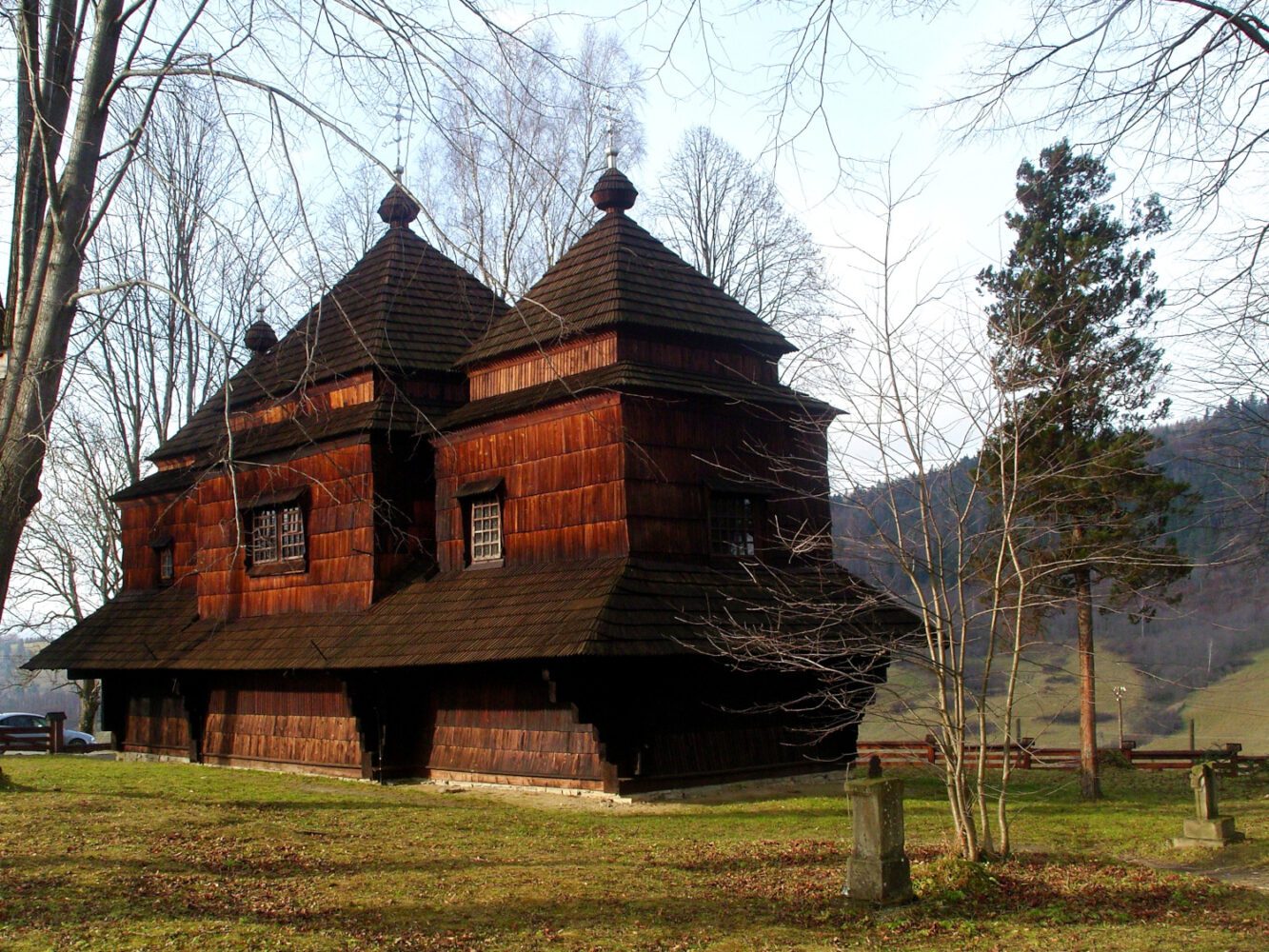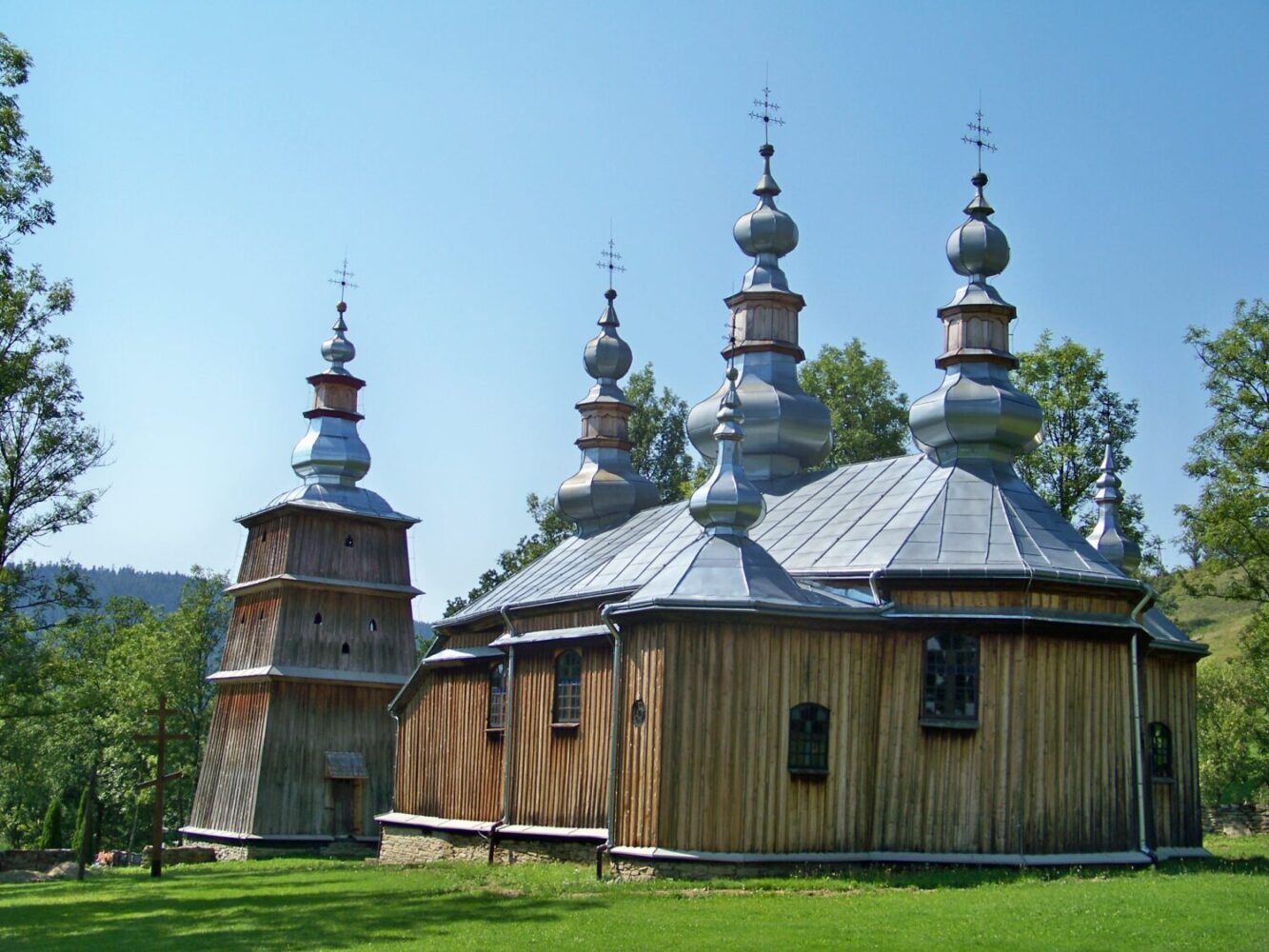Wooden Tserkvas Of The Carpathian Region
Wooden Tserkvas
Wooden Tserkvas – updated 09 January 2023.
The tserkvas Of The Carpathian Region were built between the 16th and 19th centuries by communities of Orthodox and Greek Catholic faiths. Sixteen tserkvas (churches) are listed by UNESCO of which eight are located in Poland and eight are located in Ukraine.

Complex structures
The tserkvas were built of horizontal logs and were complex structures constructed using distinct building traditions rooted in Orthodox ecclesiastic design interwoven with elements of local tradition. The wooden tserkvas were built on a tri-partite plan surmounted by open quadrilateral or octagonal domes and cupolas with wooden bell towers on the outside and iconostases and polychrome decorations in the inside.
Outside, they had churchyards, gatehouses and graveyards bounded by perimeter walls or fences and gates, often surrounded by trees.
Carpentry skills
Exceptional carpentry skills were required to construct the tserkvas particularly for the complex corner jointing that was required. The tserkvas were raised on wooden sills placed on stone foundations, with wooden shingles covering roofs and walls.

Poland
The tserkvas in Poland are the Tserkva of St Parascheva in Radruż, the Tserkva of the Birth of the Blessed Virgin Mary in Chotyniec, the Tserkva of St Michael the Archangel in Smolnik, the Tserkva of St Michael the Archangel in Turzańsk (Podkarpackie Voivodeship), the Tserkva of St James the Less in Powroźnik, the Tserkva of the Virgin Mary’s Care in Owczary, the Tserkva of St Parascheva in Kwiatoń and the Tserkva of St Michael the Archangel in Brunary Wyżne (Małpolskie Voivodeship).
The 16 churches can be divided into four groups of different ethnographic architectural traditions.
The Tserkvas of the Carpathian Region in Poland and Ukraine were included on the World Heritage List in 2013 during the 37th session of the World Heritage Committee in Phnom Penh (dec. 37 COM 8B.37).
Buildings are available to visitors. The tserkvas in Radruz, Rohatyn and Drohobych are currently used as museums.
FAQ
Here are some frequently asked questions about the wooden tserkvas (churches) of the Carpathian region:
Where are the tserkvas of the Carpathian region located?
The tserkvas are located in the Carpathian Mountains of Eastern Europe. They can be found in countries such as Poland, Ukraine, and Slovakia.
What is the history of the tserkvas?
The tserkvas have a long history dating back to the medieval period. They were built by the Eastern Orthodox and Greek Catholic communities of the region, and they were an important cultural and spiritual center for these communities. Many of the tserkvas are now recognized as UNESCO World Heritage Sites due to their architectural and historical significance.
Are the tserkvas of the Carpathian region open to the public?
Yes, many of the tserkvas are open to the public. Some are still used as places of worship, while others have been converted into museums or cultural centers.
Is there a cost to visit the wooden tserkvas?
There may be a fee to visit some of the tserkvas. The cost of admission varies depending on the specific tserkva and the type of tour or visit you choose.
Are there guided tours of the wooden tserkvas of the Carpathian region?
Yes, guided tours of the wooden tserkvas are available for visitors. The tours are typically offered in the local language, but English-language tours may also be available upon request.
Are the wooden tserkvas of the Carpathian region wheelchair accessible?
The accessibility of the tserkvas can vary. Some of the tserkvas may have stairs or other barriers that make them difficult to access for people with mobility impairments. It is recommended to contact the specific tserkva you plan to visit in advance to inquire about accessibility details.